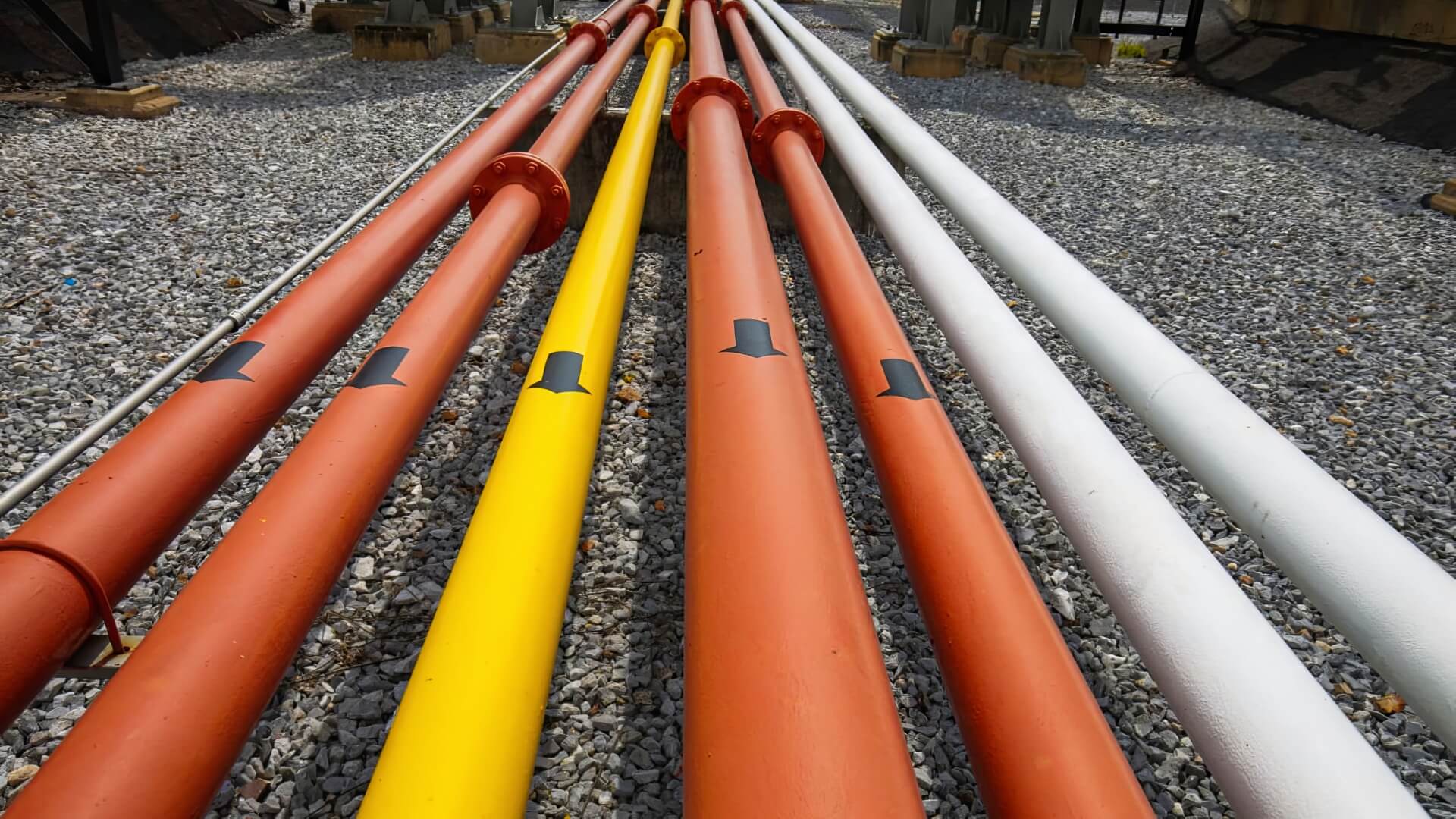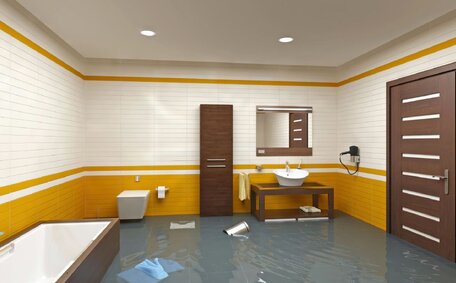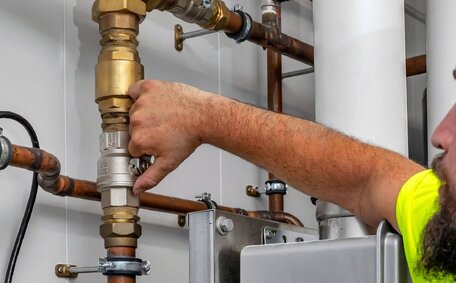Introduction: Why Has My Hot Water Stopped Working?
Losing hot water unexpectedly can be a real hassle. It’s a common issue that many homeowners face at some point. Rest assured, this article will provide a clear, step-by-step troubleshooting guide for your hot water system.
We’ll explore common issues, including gas or electric water heater malfunctions and water pressure problems. Our checklist will help you restore your hot water supply. If you still need help, call Moorebank Plumbing and we can check out your system to diagnose and repair it.
Quick Checks When Your Hot Water Goes Cold
If your hot water supply has abruptly stopped, perform these preliminary checks before reaching out to a plumber:
- Verify that the power switch or circuit breaker for your water heater is on. Check that the pilot light is ignited for gas systems.
- Ascertain that the cold water inlet tap to the heater is fully open; a partially closed tap can reduce water flow.
- Establish if the issue is isolated to one tap or affects all hot water outlets throughout your home.
Checking Your Water Heater Settings
The thermostat balances hot and cold water within your heater. Find the thermostat outside of an electric water heater or by the pilot light panel on a gas one.
Use caution when adjusting thermostat settings, as the interior components can be extremely hot. Set the thermostat between 50-60°C (120-140°F) for optimal performance and safety.
Your water heater should also have a high-temperature cut-off switch as a safety mechanism in case the thermostat fails. This is usually set to around 66°C (150°F). If it trips, it will need to be reset once the system cools down.
Adjusting these settings requires getting close to dangerous components inside your water heater. If you are unsure, contact Moorebank Plumbing for assistance.
Inspecting Pipes and Fixtures for Leaks
Visible leaks around pipes, faucets, or your water heater can impact water temperature and flow even if they seem minor. Check the following areas thoroughly for any signs of water leakage or dampness:
- Pipe joints
- Valves
- Faucet connections
- The water heater itself near inlet/outlet pipes
- Areas where pipes penetrate walls
If you find a leak, try tightening any fittings first. If that doesnt work or the leak seems severe, turn off the main water supply to your home before attempting repairs. Leaks left unchecked can cause water damage or mould growth.
For stubborn leaks or if youre uncomfortable making repairs, contact our team at Moorebank Plumbing. Our licenced, experienced plumbers can inspect your system, identify any problem areas, and fix leaks properly.
Testing Water Pressure
Low water pressure can prevent your hot water from reaching its proper temperature. Start by checking if the issue only occurs at one faucet or affects all hot water outlets.
Locate the pressure relief valve on your water heater. Carefully lift and release the lever - you should hear a popping sound as a small rush of water is released. If no water does come out, the valve could be jammed shut, pointing to a pressure issue.
Gently tap the valve with a wrench while engaging the lever. If it’s still stuck, for safety, get in touch with Moorebank Plumbing.
If water does release, check that it flows freely without obstructions.
A trickle suggests the valve isn’t sealing correctly, leading to reduced pressure.
Understanding Your Water Heater System
There are a few common types of water heaters found in most homes:
- Electric water heaters use electric heating elements controlled by a thermostat to heat water stored in an insulated tank.
- Gas water heaters utilise a gas burner that heats a tank of water. They require proper ventilation and a pilot light to operate.
- Solar water heaters use free energy from the sun to heat water that then flows into your home’s plumbing system.
Typically, an electric or gas water heater contains:
- The tank that holds and insulates the water.
- Heating elements or gas burner that heat the water.
- A thermostat that controls the temperature.
- The anode rod, which protects the tank from corrosion.
- A pressure relief valve that releases excess pressure.
- A drain valve for flushing out sediment.
Understanding these basic components can help you diagnose and address common water heating issues. If you’re still at a loss with your hot water system issues, consider professional support.
Electric Water Heaters: Common Issues
Electric water heaters can experience a few common problems that prevent you from getting hot water:
- The heating elements wear out over time and stop heating properly. You may see a reduction in hot water before they cease working entirely.
- The thermostat fails, resulting in water that never reaches the proper temperature. Thermostats may lose accuracy and fail to regulate temperatures over time.
- A tripped breaker or blown fuse cuts power to the water heater so it cannot heat the water.
- The high temp limit switch may have tripped. This is the safety mechanism that shuts off power if the tank overheats. You’ll need to reset it for hot water to return.
If your electric water heater isn’t producing hot water despite the power being on, the thermostat or heating elements are likely at fault. For professional diagnoses and repairs, contact our team at Moorebank Plumbing. We service all brands and models of hot water systems.
Gas Water Heaters: Pilot Lights and Gas Flow
Gas water heaters rely on a pilot light to ignite the gas burner and heat your water. If this small flame goes out, your hot water will stop working entirely.
Check that the pilot light is actually lit - you should see a small blue flame through the viewing window. If not, refer to the lighting instructions printed on your heater or in your home’s manual. You’ll need to hold down an override button while relighting it.
Ensure any knobs are turned to "On" once lit. The pilot flame heats the thermocouple which then signals the gas valve to open and allow fuel to the burner. If the pilot goes out repeatedly, the thermocouple may need cleaning or replacement.
Inadequate gas flow can also prevent your water from heating properly. Listen for the burner igniting when hot water is turned on. If you don’t hear the expected sounds, contact Moorebank Plumbing to inspect for obstructions in the gas line or issues with the control valve or igniter.
General Maintenance Tips
Routine maintenance on your water heater prevents issues and prolongs its life. Here are some key tasks homeowners should do:
Yearly Anode Rod Inspection
The anode rod is a crucial component that protects the inner tank from corrosion. Over time it corrodes instead of the tank. Visually inspect it annually and replace when it’s substantially worn down.
Triennial Water Heater Flushing
Sediment buildup reduces heating efficiency. Drain 1-2 buckets from the tank via the drain valve to clear out sediment and mineral deposits.
Replace Heating Elements When Required
The heating elements of electric water heaters may degrade over time. Check their condition during routine maintenance and replace any deteriorated elements.
Annual Inspection of Gas Connections and Pilot Light
Ensure gas line fittings are tight with no leaks. Clean the thermocouple and pilot light assembly if the pilot light frequently goes out.
Consider Replacing After 10-15 Years
Even with maintenance, most residential water heaters last 10-15 years. Schedule a professional inspection after 10 years to evaluate your water heater’s remaining life span.
Keeping up with minor maintenance goes a long way to preventing major water heating problems. Reach out to Moorebank Plumbing for help inspecting or servicing your water heater.
Sediment Buildup and Flushing
Sediment from the water can build up at the bottom of your water heater tank over time. This buildup of mineral deposits and sediment acts as an insulator, preventing heat from properly reaching the water. Flushing the tank helps remove this sediment buildup.
To drain the tank and flush out sediment, first turn off the power to your electric water heater or the gas supply on a gas heater, then proceed with the following steps. First, attach a garden hose to the drain valve near the bottom of the tank, then route it to a bucket or drain area. Open the relief valve at the top to allow air flow, then slowly open the drain valve.
Allow the water to flow briskly for a short time before shutting the valve to ensure proper flushing.
Expect to see sediment expelled through the hose. Regularly flushing your water heater optimises performance and heating efficiency.
Insulating Tanks and Pipes
Insulating your hot water tank and pipes helps reduce heat loss as hot water flows through your plumbing system. This increases energy efficiency, allowing your water heater to maintain temperature with less energy usage.
Insulation wrap for water heaters can cut standby heat losses by up to 45%. By preventing surface heat dissipation, the water inside stays hotter longer between heating cycles. Insulated pipes also lose less warmth in transit from your water heater to outputs like taps and showers.
While insulating hot water systems does involve an upfront cost, it pays off over time through lower energy bills. And by conserving energy, you reduce your environmental footprint. Insulation also lowers the risk of surface condensation that can lead to corrosion or mould.
Installing insulation may require fitting jackets onto tanks and wrapping pipes - a task best left to qualified tradespeople. For insulation products and expert installation, reach out to our team at Moorebank Plumbing.
Yearly Inspections
Having your hot water system inspected annually by a professional plumber is strongly recommended to keep it running efficiently and help prevent issues.
During yearly hot water heater inspections, plumbers like Moorebank Plumbing will:
- Check and adjust thermostat settings
- Inspect the anode rod and heating elements
- Flush out sediment to optimise efficiency
- Test water pressure and temperature
- Ensure electrical connections are tight
- Evaluate the tank, valves and pipes
This thorough maintenance helps maximise performance and longevity. It can diagnose problems before they become serious and expensive to fix. Many issues can be repaired easily if detected early.
Moorebank Plumbing has the expertise to service all brands and models of hot water systems. Investing in preventative inspection from our licenced, local plumbers saves money over time and gives peace of mind your hot water will keep flowing.
Schedule your annual hot water heater inspection with a professional plumber today.
When to Call a Professional Plumber
There comes a point in troubleshooting your hot water system when professional expertise is required. Contact a licenced plumber at Moorebank Plumbing if you encounter any of the following issues:
- You’ve checked pilot lights, thermostats, valves and pressure yet still have no hot water
- The pilot light repeatedly goes out no matter what you try
- There are leaks from fittings, pipes or the water heater itself that you cannot resolve
- Sediment flushings haven’t improved hot water temperature
- There are strange noises or the smell of gas coming from the water heater
- The high temperature limit switch trips repeatedly
- You have very low water pressure throughout the home
Our qualified plumbers are adept at diagnosing and resolving complex hot water system problems. We can troubleshoot electric, gas and solar water heaters and repair all models and brands.
In Australian homes, around 25% of household energy consumption is due to water heating. Ageing, faulty systems waste energy and cost you more on bills over time. Moorebank Plumbing provides reliable solutions to restore efficiency.
For excellent local plumbing services, reach out to us at 1300 349 338 or via email at [email protected]. Get your hot water flowing reliably again.






